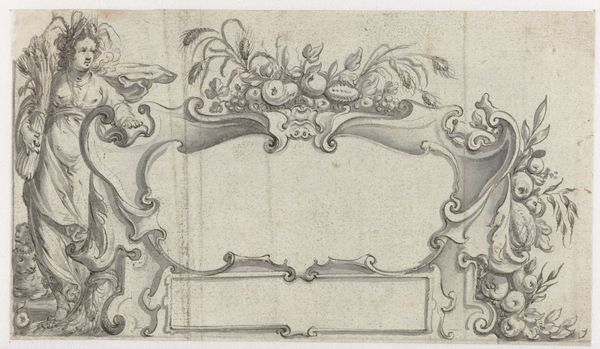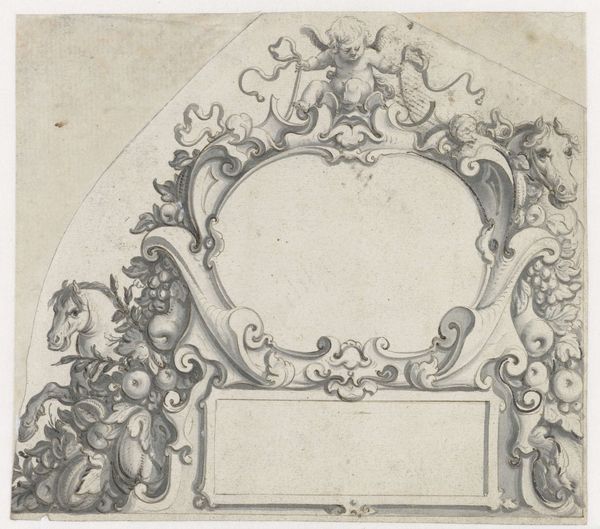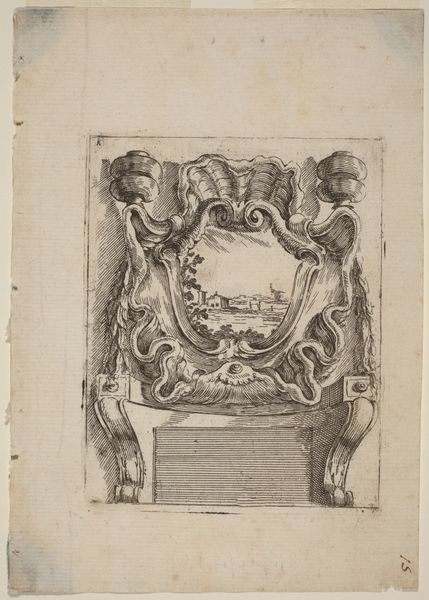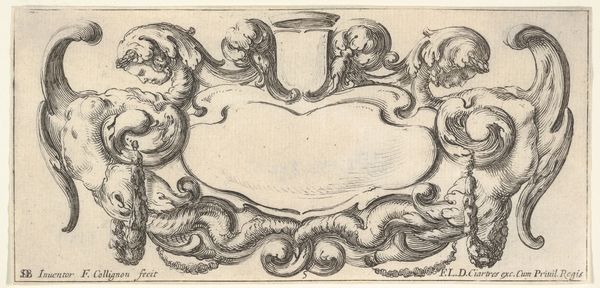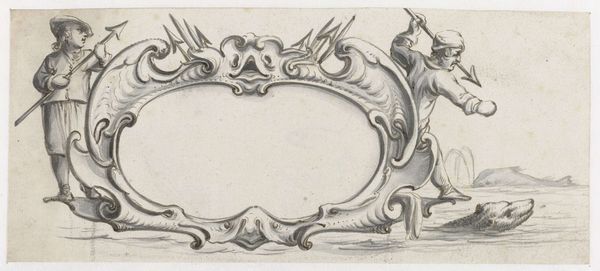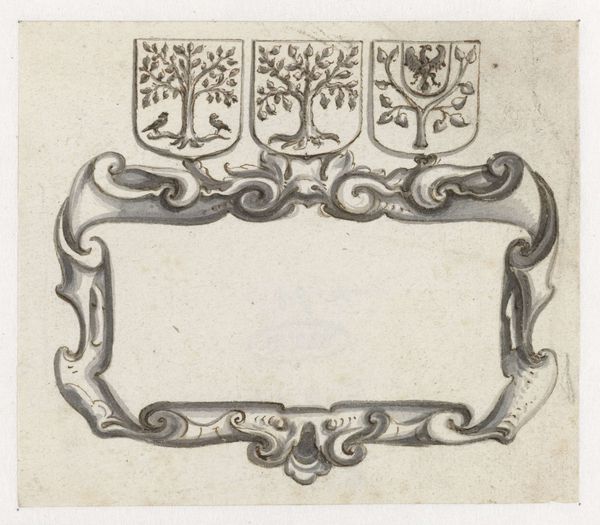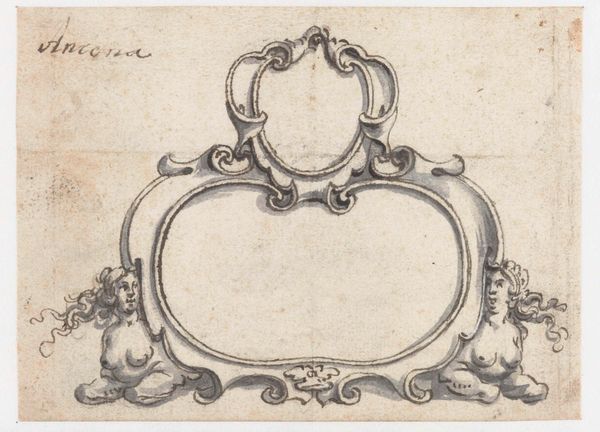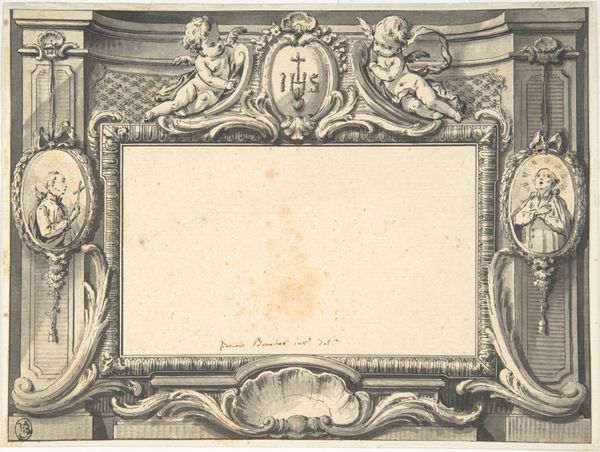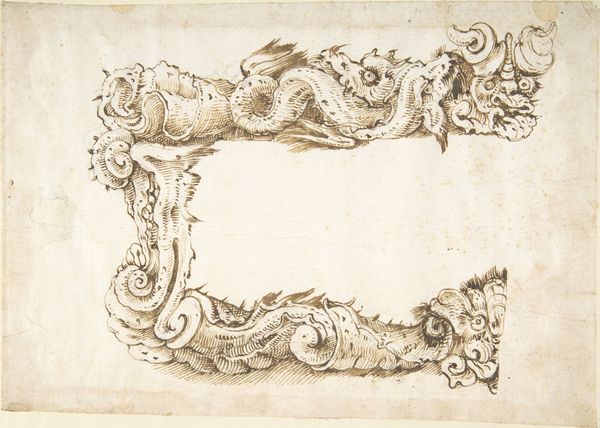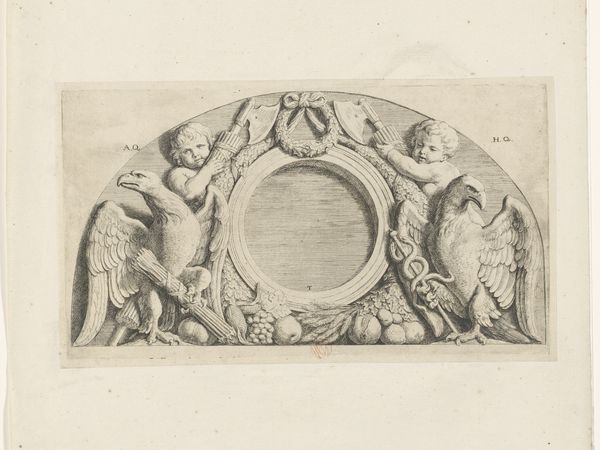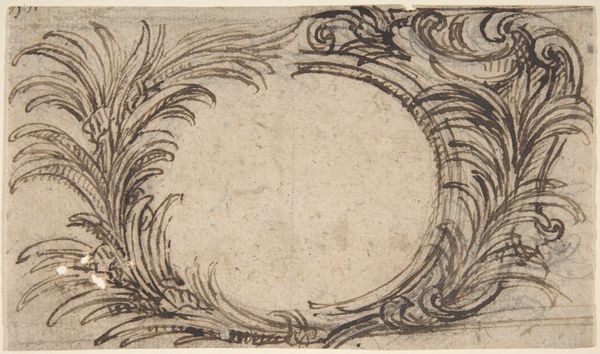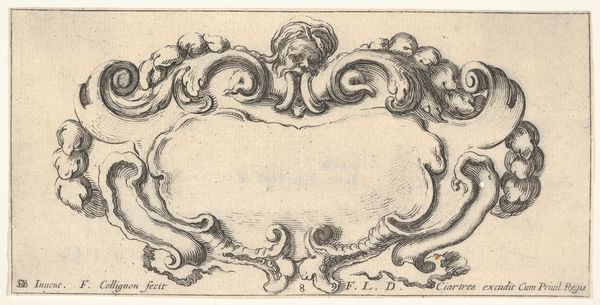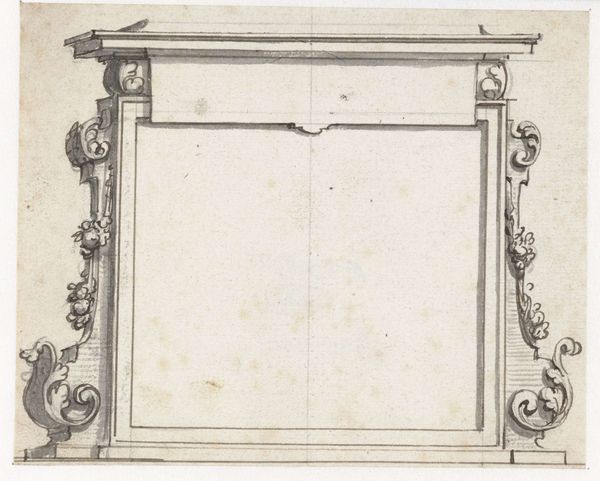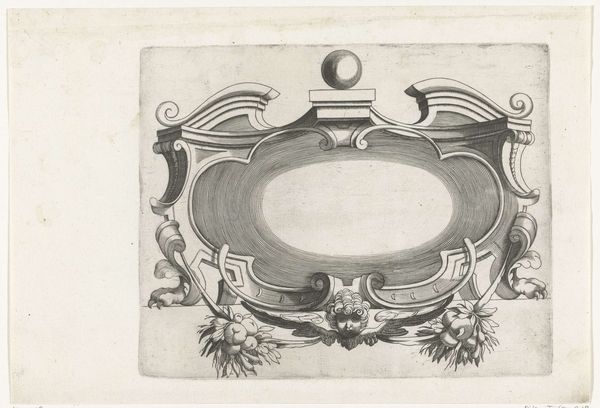
drawing, pencil
#
portrait
#
drawing
#
baroque
#
pencil drawing
#
pencil
#
genre-painting
#
history-painting
Dimensions: height 111 mm, width 145 mm
Copyright: Rijks Museum: Open Domain
Curator: Here we have "Cartouche with Two Men Sorting Fish" by Pieter Jansz., created around 1657 to 1662. It’s rendered in pencil. What's your first impression? Editor: Stark. And incredibly detailed. It looks like a graphite rendering of a stage set. I am curious about the lines, so very neat and clean, within the borders. Is it for the sketch of a design or something else? Curator: Good eye. It does feel staged, doesn’t it? Jansz. was active during a time of huge transitions in civic life, the rise of mercantilism and the public roles art assumed in relation to it. The "Cartouche" speaks to those shifts and the baroque style with which art reflected power. Editor: Well, let's think about this “Cartouche” literally. It frames nothing at all! This is a preparation, I’d wager, perhaps for a larger, painted work. Those clean lines you describe are certainly ready to receive text and illustration. The wheat and produce alongside figures sorting fishes reminds me of everyday toil turned into high design. How are social dynamics pictured here? Curator: Interesting point. While humble occupations are given dignity through allegorical framing, consider who sees, buys, and displays this imagery. In championing those in their civic employ, they buttress their positions, a public display legitimizing the economic conditions of the time. The composition gives nobility to the industry within it. Editor: So, Jansz., by elevating labor into the visual language of power, also obscures material reality through aestheticisation? Look closely; it’s rendered with incredible care to material. Is this design merely symbolic, or did these materials play a real role in the lives represented within? I keep returning to these individuals sorting fish as manual activity given its own artistic value here. Curator: It's a complex interaction between art and social representation, certainly. This piece asks viewers to engage in this tension. By bringing everyday genre painting into alliance with themes like commerce and baroque design, the artist gives us ways of perceiving not only art and craft, but the society that produced them. Editor: Indeed. It makes you consider who designs and who produces, even within the artwork itself. Curator: It really highlights the social currency of art at that time, doesn't it? A fascinating intersection.
Comments
No comments
Be the first to comment and join the conversation on the ultimate creative platform.
